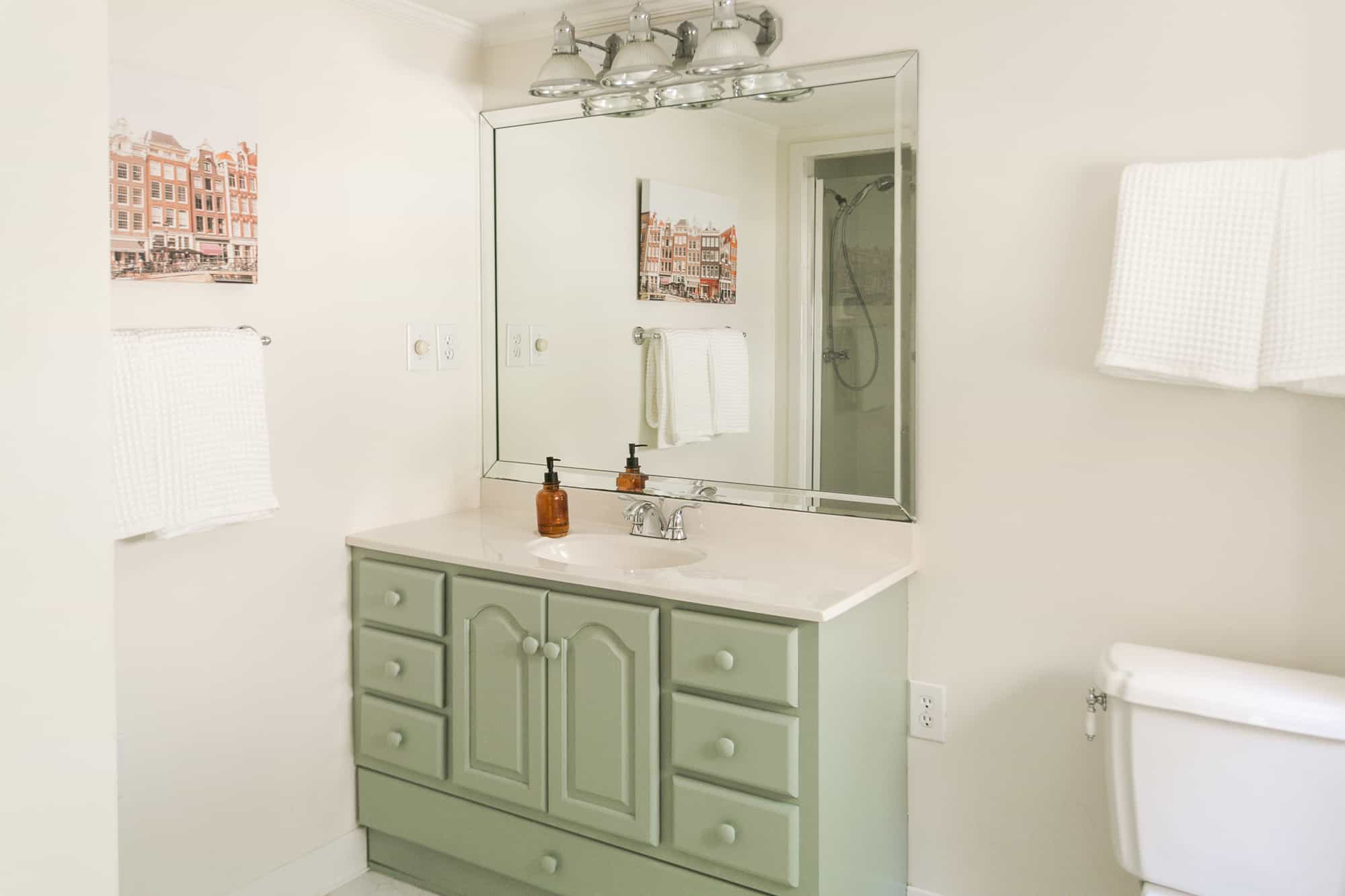

Articles
What Kind Of Paint To Use On Bathroom Vanity
Modified: November 1, 2024
Looking for articles on what kind of paint to use on a bathroom vanity? Explore our expert tips and recommendations for choosing the perfect paint for your vanity renovation.
(Many of the links in this article redirect to a specific reviewed product. Your purchase of these products through affiliate links helps to generate commission for Storables.com, at no extra cost. Learn more)
Introduction
Choosing the right paint for your bathroom vanity is crucial in creating a beautiful and durable finish. The bathroom vanity is not only a functional piece of furniture but also a focal point that adds style and personality to your bathroom. With the constant exposure to moisture, steam, and cleaning products, it’s essential to select a paint that can withstand these conditions and maintain its appearance over time.
In this article, we will explore the factors to consider when choosing paint for your bathroom vanity, the different types of paint available, the best paint brands to consider, and provide a step-by-step guide on how to paint your bathroom vanity. Whether you’re looking to refresh your bathroom decor or give your vanity a new lease on life, this article will provide you with the knowledge to make an informed decision and achieve a professional-looking finish.
Key Takeaways:
- Choose a paint that harmonizes with your bathroom decor, offers moisture resistance, and aligns with your maintenance preferences to ensure a durable and stylish finish for your bathroom vanity.
- Properly prepare, paint, and maintain your bathroom vanity to create a stunning and long-lasting focal point in your bathroom, enhancing its aesthetics and functionality.
Read more: What Is A Vanity Case Used For
Factors to consider when choosing paint for bathroom vanity
When selecting paint for your bathroom vanity, there are several important factors to consider. Let’s explore these factors in detail:
Color options
The color of your bathroom vanity can greatly impact the overall aesthetic of your bathroom. It’s important to choose a color that complements your existing bathroom decor and personal style. Consider the color scheme of your bathroom, including the wall color, tiles, and fixtures, and select a paint color that harmonizes with these elements. Whether you prefer a bold statement or a neutral tone, choose a color that you’ll be happy with for years to come.
Durability and moisture resistance
Bathroom vanities are constantly exposed to moisture, steam, and humidity, which can cause damage to the paint finish if the wrong type of paint is used. It’s essential to choose a paint that is specifically formulated for high-moisture areas like bathrooms. Look for paints that are labeled as moisture-resistant, durable, and have a high degree of adhesion to prevent peeling, cracking, or bubbling in the humid bathroom environment.
Finish options
The finish of the paint can greatly affect the appearance and durability of your bathroom vanity. There are various finish options available, including matte, eggshell, satin, semi-gloss, and high-gloss. Each finish has its advantages and drawbacks. Matte finishes provide a low sheen and can hide imperfections, but they may be more prone to staining and less durable. On the other hand, high-gloss finishes offer a shiny and reflective surface, but they may require more upkeep to maintain their appearance. Consider your personal preferences, the level of maintenance you’re willing to undertake, and the overall style of your bathroom when choosing the appropriate finish.
By carefully considering color options, durability, moisture resistance, and finish choices, you can ensure that the paint you choose for your bathroom vanity will not only enhance the aesthetics of your bathroom but also withstand the challenges of the environment. Take your time researching and selecting the right paint to achieve a beautiful and long-lasting finish for your bathroom vanity.
Read more: How To Paint A Vanity
Different types of paint suitable for bathroom vanity
When it comes to painting your bathroom vanity, there are a few different types of paint that are suitable for this specific application. Let’s take a closer look at each type:
Latex paint
Latex paint, also known as water-based paint, is a popular choice for bathroom vanities due to its ease of use and fast drying time. It is low in toxicity and provides a durable and washable finish. Latex paint is available in a wide range of colors and finishes, making it versatile for any bathroom décor. However, it’s important to choose a latex paint that is specifically formulated for high-moisture areas to ensure adequate moisture resistance.
Acrylic paint
Acrylic paint is another excellent option for painting bathroom vanities. It offers similar benefits to latex paint, such as low toxicity, fast drying time, and durability. Acrylic paint is known for its excellent color retention and resistance to fading or yellowing over time. Like latex paint, it’s crucial to choose an acrylic paint that is designed for use in bathrooms to ensure long-lasting results.
Enamel paint
Enamel paint is a type of oil-based paint that provides a hard and glossy finish. It is highly durable, moisture-resistant, and can withstand heavy use. Enamel paint is an excellent choice for bathroom vanities that undergo frequent contact with water and cleaning products. However, it’s important to note that enamel paint has higher VOC levels and a longer drying time compared to latex or acrylic options. Proper ventilation is necessary when using enamel paint.
Read more: What Kind Of Paint To Use On A Dresser
Oil-based paint
Oil-based paint is known for its exceptional durability and smooth finish. It provides a hard, glossy surface that is resistant to moisture, stains, and abrasions. Oil-based paint is ideal for bathroom vanities where maximum protection is needed. However, it’s important to note that oil-based paint has a strong odor, requires longer drying time, and often requires the use of mineral spirits for cleanup. Proper ventilation and safety precautions should be followed when using oil-based paint.
Before selecting a paint type for your bathroom vanity, consider the specific requirements of your project, such as desired finish, durability, and ease of application. Additionally, be sure to carefully follow the manufacturer’s instructions and recommendations for proper preparation and application techniques for the specific paint type you choose.
Best paint brands for bathroom vanity
When it comes to choosing the best paint for your bathroom vanity, selecting a reputable and high-quality brand is essential. Here are three top paint brands known for their excellent performance in bathroom painting projects:
Brand A
Brand A has established itself as a trusted name in the paint industry, offering a wide range of paints specifically formulated for bathroom applications. Their paints are known for their durability, moisture resistance, and ability to withstand the humid bathroom environment. Brand A provides an extensive color palette, allowing you to find the perfect shade for your bathroom vanity. Their paint also comes in a variety of finishes, from matte to high-gloss, catering to different style preferences.
Brand B
Brand B is renowned for its high-quality paints that provide exceptional coverage and durability. Their bathroom-specific paints are developed to offer superior moisture resistance and protection against mold and mildew. Brand B offers an extensive range of colors, allowing you to find the perfect hue to match your bathroom decor. Additionally, their paints come with various finish options, enabling you to achieve the desired look and level of sheen for your bathroom vanity.
Read more: What Kind Of Paint To Use On Grass
Brand C
Brand C is a trusted name in the paint industry, with a reputation for producing paints that deliver excellent performance in high-moisture areas such as bathrooms. Their paints are known for their exceptional durability, washability, and resistance to stains and moisture. Brand C offers a wide selection of colors and finishes, ensuring that you can find the perfect paint for your bathroom vanity. Additionally, their paints are easy to apply and provide a smooth and even finish.
When selecting a paint brand for your bathroom vanity, it’s important to consider your specific needs, such as color options, durability, moisture resistance, and ease of application. Additionally, it’s recommended to read customer reviews, consult with professionals, or seek recommendations from reputable sources to ensure you choose a brand that will provide the best results for your project.
Preparing the bathroom vanity for painting
Before you begin painting your bathroom vanity, proper preparation is crucial to ensure a smooth and long-lasting finish. Here are two essential steps to prepare your vanity for painting:
Cleaning and removing old paint
The first step in preparing your bathroom vanity for painting is to thoroughly clean the surface. Remove any dust, dirt, or grime using a mild soap and water solution or a gentle household cleaner. Be sure to rinse the surface well and allow it to dry completely before proceeding. If your vanity has existing paint that is chipped or flaking, use a paint scraper or sandpaper to remove the old paint. It’s important to achieve a smooth and clean surface before moving on to the next step.
Sanding and priming
Once the surface is clean and free of old paint, it’s time to sand the bathroom vanity. Use medium-grit sandpaper to lightly sand the entire surface, including the edges and corners. Sanding will help remove any remaining rough spots, enhance adhesion, and create a better surface for the paint to adhere to. After sanding, wipe away any dust with a damp cloth or sponge.
The next step is to apply a primer to the vanity. Primer acts as a base coat, ensuring better adhesion of the paint and providing a smoother and more even finish. Choose a primer that is suitable for the type of paint you’ve chosen and follow the manufacturer’s instructions for application. Apply the primer evenly using a brush or a roller, making sure to cover all surfaces including the edges and corners.
By cleaning and removing old paint, as well as sanding and priming the bathroom vanity, you’ll create an ideal surface for painting. These preparation steps will help the paint adhere better and result in a professional-looking finish that will last for years to come.
Read more: What Is A Vanity?
Step-by-step guide for painting your bathroom vanity
Painting your bathroom vanity can transform and rejuvenate the look of your entire bathroom. Follow these step-by-step instructions to achieve a professional and long-lasting finish:
Preparation
- Remove all hardware, such as knobs, handles, and hinges, from the vanity. This will make the painting process easier and ensure a smooth finish.
- If possible, take out the vanity drawers and doors and paint them separately to ensure even coverage and access to all surfaces.
- Protect the surrounding area by covering the floor, countertops, and any fixtures with drop cloths or plastic sheets.
- Mix paint thoroughly and pour it into a paint tray or bucket for easy access during the painting process.
- Use painter’s tape to mask off any areas you want to protect, such as edges, mirrors, or walls adjacent to the vanity.
Painting techniques
- Start by applying paint to the edges and corners of the vanity using a brush. This will ensure that these areas are covered properly.
- Once the edges are painted, use a brush or small paint roller to apply an even coat of paint to the larger surfaces, such as the doors, drawers, and sides of the vanity. Apply the paint in smooth, even strokes, working in one direction.
- After the larger surfaces are painted, move on to the main body of the vanity. Use a larger brush or paint roller to apply the paint, again working in one direction.
- Ensure that the paint is applied evenly and without drips or streaks. Smooth out any imperfections with the brush or roller as needed.
Applying multiple coats
- Allow the first coat of paint to dry completely, following the manufacturer’s recommended drying time. Depending on the type of paint used, this can take anywhere from a few hours to overnight.
- Once the first coat is dry, lightly sand any rough areas or imperfections with fine-grit sandpaper. Remove any dust from sanding with a damp cloth.
- Apply a second coat of paint following the same technique used for the first coat. This second coat will help ensure full coverage and a more uniform finish.
- Allow the second coat to dry completely before deciding if an additional coat is necessary. Depending on the color and condition of the vanity, a third coat may be needed for optimal coverage.
Drying and curing time
- After applying the final coat of paint, allow the vanity to dry fully according to the paint manufacturer’s instructions. Typically, this can take anywhere from 24 to 48 hours.
- Once the paint has dried, give it ample time to cure. Curing time can vary depending on the type of paint used, but it usually takes at least a week for the surface to fully harden and reach maximum durability.
- Avoid placing heavy objects on the vanity or using harsh cleaning products during the curing process to prevent damage to the newly painted surface.
By following these step-by-step instructions and allowing sufficient drying and curing time, you’ll achieve a beautifully painted bathroom vanity that will add a fresh and stylish touch to your bathroom decor.
Maintenance and care for a painted bathroom vanity
Once you have successfully painted your bathroom vanity, it’s important to properly maintain and care for the newly painted surface to ensure its longevity and continued beauty. Here are some essential tips:
Cleaning tips
Regular cleaning is essential to keep your painted bathroom vanity looking its best. Use a gentle, non-abrasive cleaner and a soft cloth or sponge to wipe down the surface. Avoid using harsh chemicals or abrasive cleaners that can damage the paint finish. Additionally, immediately clean up any spills or splatters to prevent staining.
It’s important to note that different types of paint finishes may require different cleaning methods. Matte finishes are more susceptible to staining, so it’s crucial to clean them promptly. High-gloss finishes are generally easier to clean and may require only mild soap and water.
Preventing peeling or chipping
To prevent peeling or chipping of the paint on your bathroom vanity:
- Avoid placing hot objects directly on the surface, as heat can cause the paint to soften or peel.
- Use caution when handling sharp objects, such as razors or hair styling tools, to prevent accidental scratches or chips.
- Avoid using abrasive sponges or brushes that can scratch or damage the painted surface.
- Consider using a protective topcoat or sealer specifically designed for painted surfaces to provide an extra layer of protection.
Read more: How To Paint Bathroom Vanity Without Sanding
Touch-ups and maintenance
Over time, your painted bathroom vanity may experience wear and tear, such as minor scratches or chips. In such cases, touch-ups can help restore the appearance of the vanity. Here are some tips for touch-ups:
- Before touching up any areas, clean the surface thoroughly to ensure proper adhesion of the new paint.
- Use a small brush or a paint pen to carefully apply the touch-up paint, following the original paint strokes and blending it with the surrounding areas.
- Allow the touch-up paint to dry completely before assessing if additional coats are needed.
Regular maintenance is also important to ensure the longevity of your painted bathroom vanity. Keep an eye out for any signs of damage or wear and address them promptly to prevent further deterioration. Regularly inspect the vanity for any peeling, chipping, or discoloration, and take appropriate action to address these issues before they worsen.
By following these maintenance and care tips, you can extend the life and beauty of your painted bathroom vanity, allowing it to remain a focal point in your bathroom for years to come.
Conclusion
Choosing the right paint and properly painting your bathroom vanity can have a significant impact on the overall look and feel of your bathroom. By considering factors such as color options, durability, and moisture resistance, you can select a paint that not only enhances your vanity but also withstands the challenges of the bathroom environment.
The different types of paint, including latex, acrylic, enamel, and oil-based, offer various benefits and considerations. Each type has its own characteristics, so it’s important to choose one that aligns with your preferences and the specific needs of your bathroom vanity.
When it comes to choosing a paint brand, selecting trusted names like Brand A, Brand B, or Brand C ensures quality and reliability. These brands offer paints specifically formulated for bathroom applications, providing durability, moisture resistance, and a wide range of colors and finishes to suit your style.
Proper preparation, including cleaning, removing old paint, sanding, and priming, is crucial to achieving a smooth and long-lasting finish. Following a step-by-step guide for painting, including techniques, applying multiple coats, and allowing adequate drying and curing time, ensures a professional-looking result.
Maintaining and caring for a painted bathroom vanity involves regular cleaning with gentle products, preventing peeling or chipping through cautious use and protecting the surface from heat or sharp objects. Touch-ups and ongoing maintenance address any minor issues and help preserve the beauty and integrity of the painted surface.
In conclusion, by selecting the right paint, properly preparing, and maintaining your bathroom vanity, you can create a stunning and durable focal point in your bathroom. Take the time to choose the right paint type and brand, follow the necessary preparation steps, and practice regular maintenance to enjoy a beautifully painted bathroom vanity for years to come.
Frequently Asked Questions about What Kind Of Paint To Use On Bathroom Vanity
Was this page helpful?
At Storables.com, we guarantee accurate and reliable information. Our content, validated by Expert Board Contributors, is crafted following stringent Editorial Policies. We're committed to providing you with well-researched, expert-backed insights for all your informational needs.
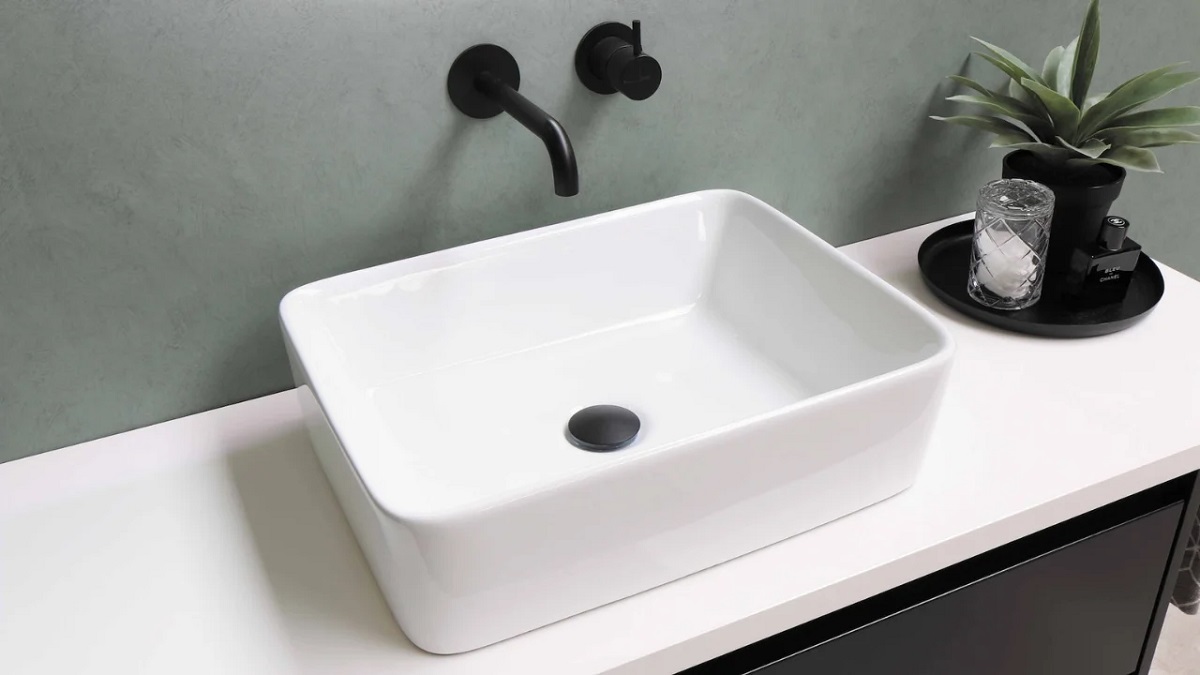
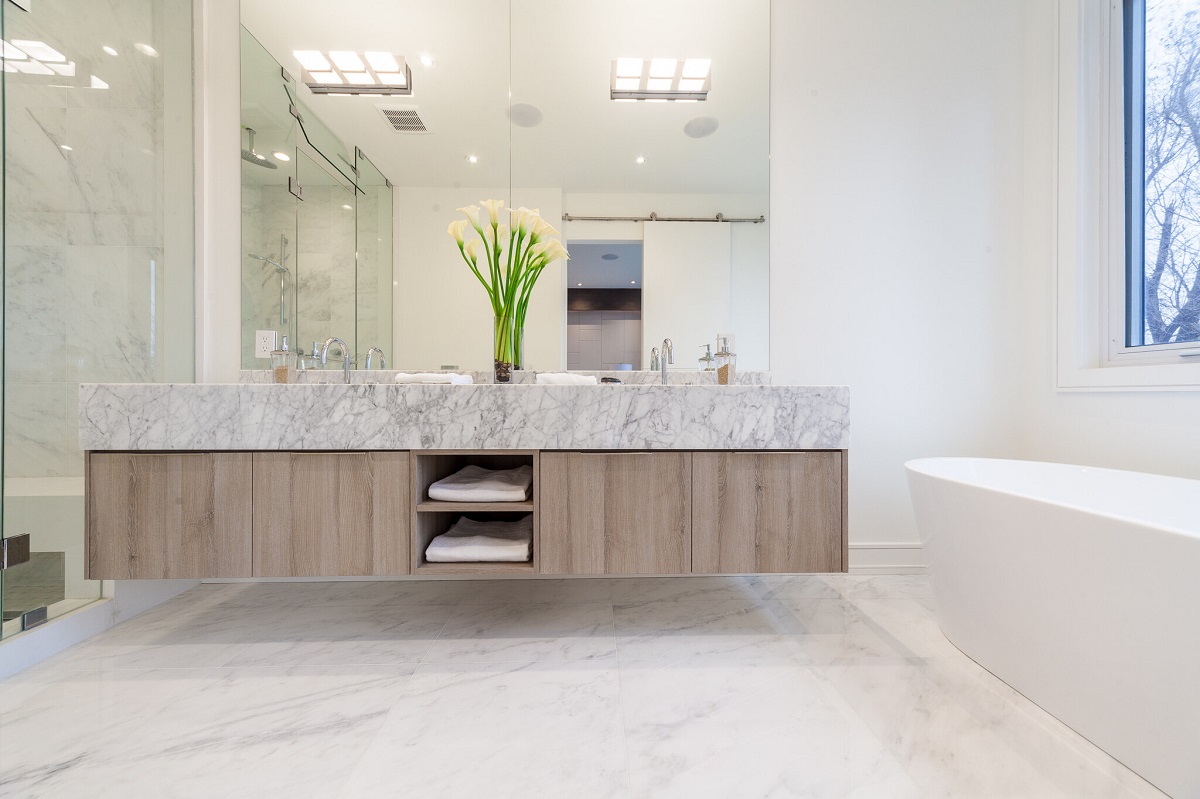


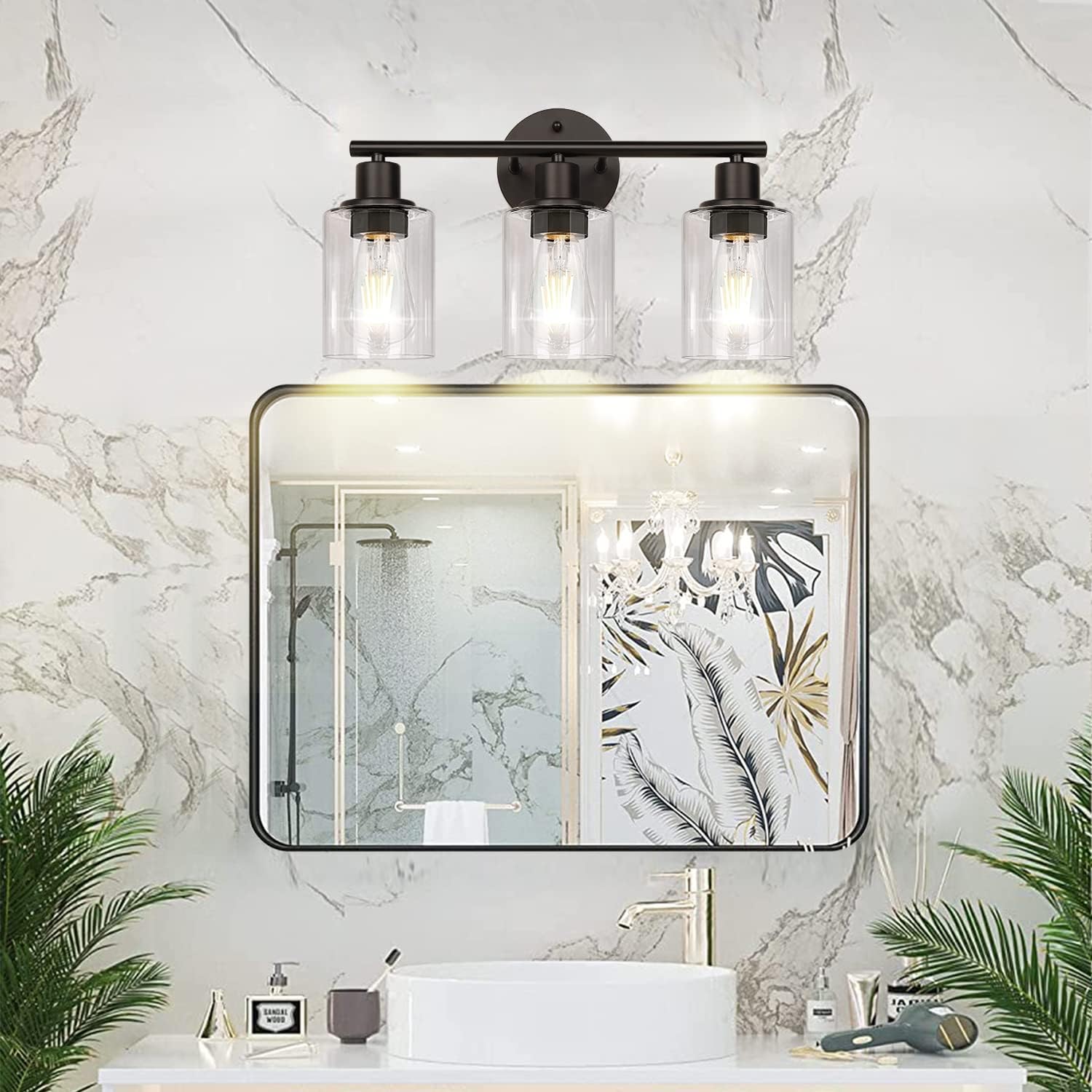


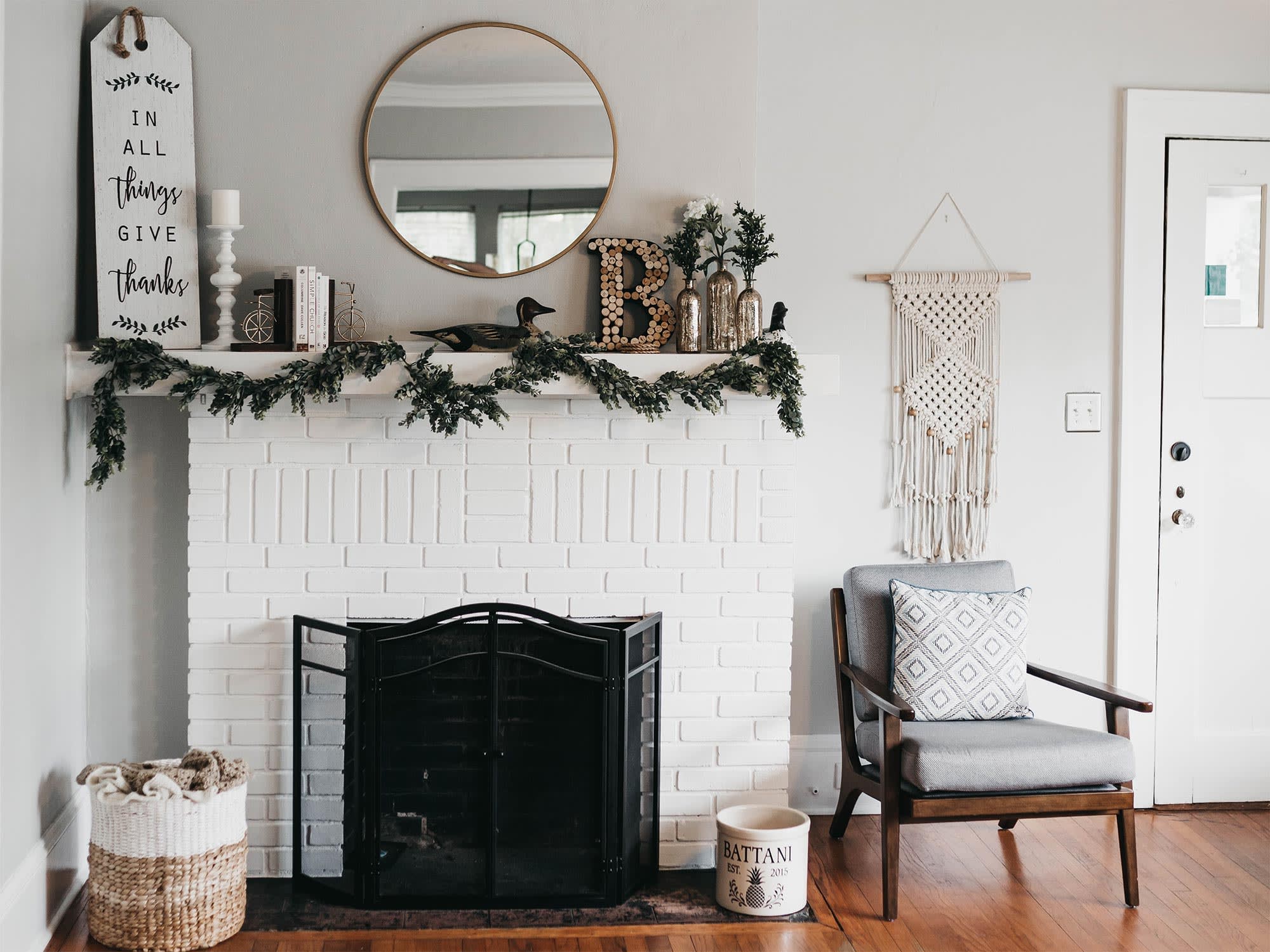
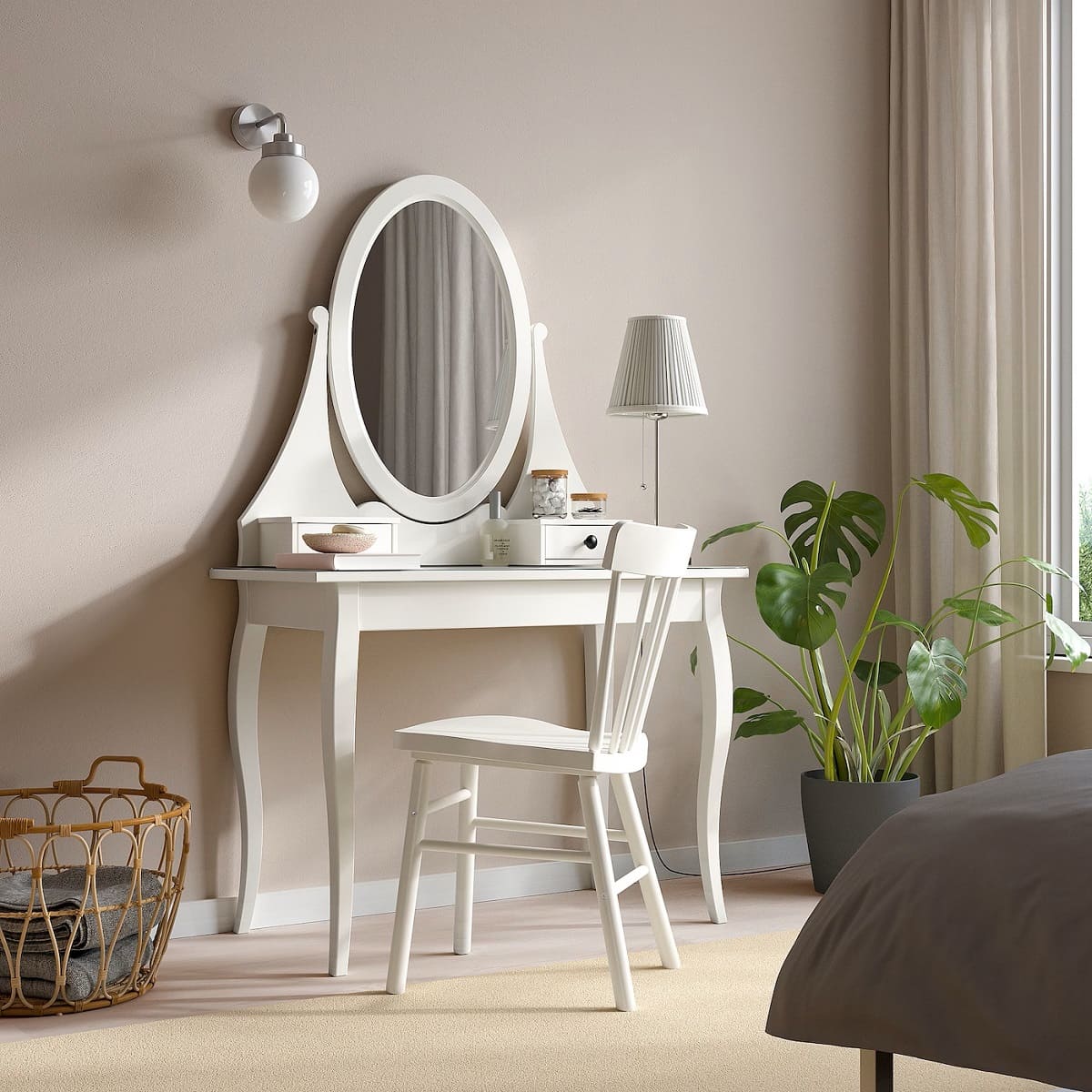

0 thoughts on “What Kind Of Paint To Use On Bathroom Vanity”